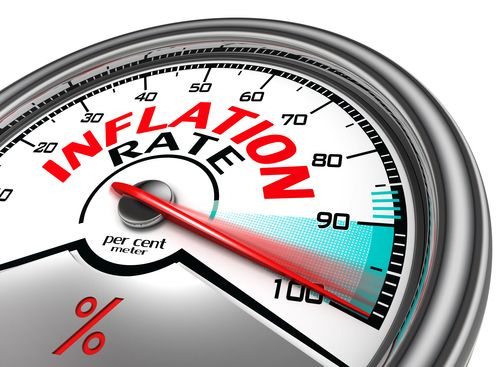In today’s Money Morning…repeating the mistakes of the past…no clue, no plans, no hope…a question that sadly has no answer…and more…
No matter where you look in any market right now, inflation is the talk of the town.
A spectre that is looming ominously over the global economic recovery.
Which is precisely why lately I’ve been digging deeper into the ‘Great Inflation’ of the ‘70s.
A period that was well before my time, but an important period in relation to macroeconomic policy.
See, as many who endured this painful decade may recall, oil shocks, currency manipulation, and corporate greed were apparently to blame. A narrative that fit nicely for the time period. Allowing Western governments in particular to shirk any responsibility for the painful policies they were enacting.
And when it came to the US Federal Reserve, this pain has proven even more evident in hindsight…
Repeating the mistakes of the past
As the Federal Reserve History website (run by the St Louis Fed itself) notes on the rampant inflation of the ‘70s:
‘From the perspective of the central bank, the inflation being caused by the rising price of oil was largely beyond the control of monetary policy. But the rise in unemployment that was occurring in response to the jump in oil prices was not.
‘Motivated by a mandate to create full employment with little or no anchor for the management of reserves, the Federal Reserve accommodated large and rising fiscal imbalances and leaned against the headwinds produced by energy costs. These policies accelerated the expansion of the money supply and raised overall prices without reducing unemployment.’
In other words, these so-called ‘experts’ had no real understanding of the forces at work. Exacerbating the issue with their meddling and rampant money printing, rather than taming inflation.
It wasn’t until 1979 when Paul Volcker was appointed as Fed Chairman, that things finally began to improve. Largely because Volcker had no choice but to take the American economy down the hard road.
As Volcker himself quipped at the time:
‘My basic philosophy is over time we have no choice but to deal with the inflationary situation because over time inflation and the unemployment rate go together…Isn’t that the lesson of the 1970s?’
Indeed, it was the lesson of the ‘70s. A lesson that reinforced an even broader and possibly more crucial maxim (emphasis added):
‘The importance of time-consistent policy choices—policies that do not sacrifice longer-term prosperity for short-term gains—and policy credibility became widely appreciated as necessary for good macroeconomic results.’
A notion that today’s Fed lackeys should really take to heart.
Because no matter how hard they continue to try and soften the impact of this pandemic, all they’re really doing is delaying the inevitable. Propping up short-term success at the expense of long-term stability.
This is especially pertinent when you consider the fact that inflation is seen as the cure, not the curse, by today’s Fed. A worrisome development that, as we’ve seen in recent days, has markets jittery about a possible return to the runaway inflation of the ‘70s and the harsh policies that it induced.
So, what do Jerome Powell and his cronies plan to do about it?
They might consider talking about it in a future meeting…
No clue, no plans, no hope
Overnight we saw the most recent minutes (from April) of the Fed’s meeting released.
Providing markets and investors with a glimpse into what these key policymakers may be thinking.
Turns out, not a whole lot.
Take this insipid comment, for instance:
‘A number of participants suggested that if the economy continued to make rapid progress toward the Committee’s goals, it might be appropriate at some point in upcoming meetings to begin discussing a plan for adjusting the pace of asset purchases.’
So, not only will the money printing (QE) continue, but they don’t even have a plan on how to stop it yet. Which to me seems totally insane.
It suggests that either they have no clue how to rein in money supply, or that they are simply unwilling to until they meet an arbitrary goal, that as the policies of the ‘70s showcased, often leads to the very outcome they are trying to avoid — higher unemployment.
Granted, I’m not trying to suggest that inflation should always be demonised. The 2% target that the Fed is aiming for is certainly what many would call ‘healthy’ for the economy.
The problem, though, is that the Fed is only measuring some inflation, not all of it. As can be seen with the extreme increase in asset prices over the past decade, let alone 12 months.
Even more puzzling, though, is the Fed’s response to the recent CPI figures. Which, may I remind you, were higher than expected.
Here is what Fed Vice Chairman, Richard Clarida, had to say on the matter:
‘In the CPI report, [reopening] did clearly put upward pressure on prices. Now our baseline view is that most of this is likely to be transitory, but we have to be attuned and attentive to the incoming data.’
So, despite acknowledging the threat of this price pressure, they’re dismissing it as simply ‘transitory’. Which begs the question, how do they determine the difference?
A question that sadly has no answer. Because perhaps the biggest takeaway from these minutes, at least in my view, is how hollow all the rhetoric is.
It reads like a political script, keeping any comments or insights as vague as possible. An opaque view of what is going on in the minds of people who oversee steering the largest economy in the world, towards prosperity.
And if we can’t tell what they’re thinking (if they’re thinking at all), then that may be the scariest insight of all.
Regards,
 |
Ryan Clarkson-Ledward,
Editor, Money Morning
PS: Our publication Money Morning is a fantastic place to start on your investment journey. We talk about the big trends driving the most innovative stocks on the ASX. Learn all about it here

